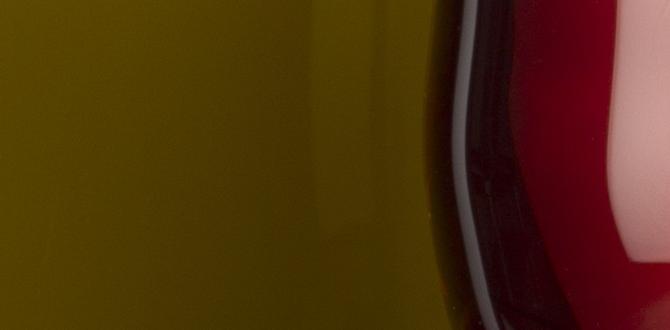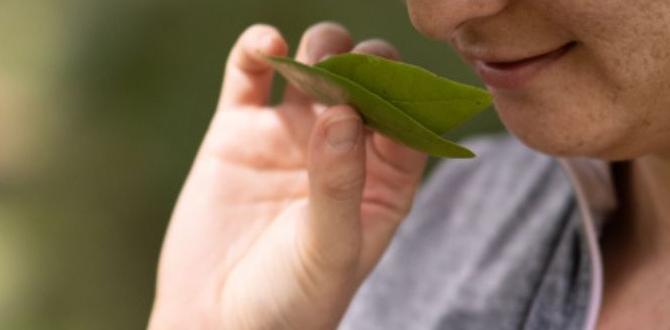The best time to visit Bishkek, Kyrgyzstan, for an effortless escape is during the shoulder seasons of spring (April to May) and autumn (September to October). These periods offer pleasant weather, fewer tourists, and lower prices, making your adventure smooth and incredibly enjoyable.
Planning a trip can sometimes feel overwhelming, especially when you’re trying to find that sweet spot for visiting a new destination. You want perfect weather, but you also don’t want to deal with massive crowds or sky-high prices. Bishkek, the vibrant capital of Kyrgyzstan, is a true gem, offering a unique blend of Soviet history, nomadic culture, and stunning natural backdrops. Finding the Bishkek best time to visit without crowds can be the key to unlocking a truly memorable and stress-free experience. This guide will help you pinpoint the ideal window for your journey, ensuring comfort and ease from booking to exploration.
Bishkek Best Time To Visit: An Effortless Escape Guide
Bishkek, nestled at the foothills of the Tian Shan mountains, experiences a continental climate with distinct seasons. Understanding these seasonal patterns is crucial for planning your visit. We’ll break down each season, highlighting what makes it appealing and what might be less ideal, focusing on finding that perfect balance for an “effortless escape.”
Spring: A Blooming Adventure (April – May)
Spring in Bishkek is a time of awakening. The snow melts, and the city bursts into life with floral blooms and gradually warming temperatures.
Pros of Visiting in Spring:
Pleasant Temperatures: Average daily temperatures begin to rise, typically ranging from 10°C to 20°C (50°F to 68°F). This is perfect for exploring the city on foot.
Blooming Scenery: Parks and surrounding mountains become lush and green. The famous apple orchards around Bishkek are often in bloom, creating picturesque views.
Fewer Crowds: While not entirely empty, spring sees fewer international tourists compared to the peak summer months. This means shorter lines at attractions and a more relaxed atmosphere.
Emerging Outdoor Activities: As the snow recedes, hiking and trekking opportunities in the nearby Ala Archa National Park become more accessible.
Affordable Options: Accommodation and flight prices can be more budget-friendly before the summer rush.
Cons of Visiting in Spring:
Variable Weather: Early spring can still be chilly, with occasional rain or even late snow. Pack layers to be prepared.
Muddy Conditions: Melting snow can make some unpaved areas muddy.
Limited High-Altitude Access: Some mountain passes and higher trekking routes might still be snow-covered in early spring.
Summer: The Peak of Activity (June – August)
Summer is undeniably Bishkek’s most popular tourist season, boasting warm, sunny days perfect for outdoor adventures.
Pros of Visiting in Summer:
Ideal Weather for Exploration: Expect warm to hot days with plenty of sunshine. Temperatures often range from 25°C to 35°C (77°F to 95°F).
Full Access to Mountain Regions: All hiking trails and mountain roads are typically open and at their most accessible. This is the best time for serious trekking to places like Song-Kol Lake or Issyk-Kul.
Vibrant City Life: The city is bustling with outdoor cafes, markets, and events.
Long Daylight Hours: Enjoy more time for sightseeing and exploration.
Cons of Visiting in Summer:
Peak Tourist Season: Bishkek and its surrounding natural attractions will be at their most crowded.
Higher Prices: Accommodation, flights, and even some tours will be more expensive.
Intense Heat: Mid-summer can be quite hot, especially in the city. It’s essential to stay hydrated and seek shade.
Less Ideal for “Without Crowds”: If your priority is an uncrowded experience, summer is generally not the best fit.
Autumn: A Golden Farewell (September – October)
Autumn brings a crisp coolness to the air and transforms the landscapes into stunning hues of red, orange, and gold. This is often considered one of the best times to visit Bishkek, especially if you’re looking for that “Bishkek best time to visit without crowds.”
Pros of Visiting in Autumn:
Spectacular Scenery: The autumn foliage in the surrounding mountains provides breathtaking views. It’s a photographer’s dream.
Comfortable Temperatures: Days are pleasantly cool, typically between 15°C and 25°C (59°F to 77°F) in September, gradually dropping in October.
Significantly Fewer Crowds: As families return to school and the summer heat subsides, tourist numbers drop considerably.
Harvest Season: Enjoy local fruits and vegetables at their freshest at the markets.
Excellent Conditions for Hiking: The cooler temperatures make trekking enjoyable, and the autumn colors add an extra layer of beauty.
Competitive Pricing: You’ll find more reasonable prices for flights and accommodation compared to the summer months.
Cons of Visiting in Autumn:
Cooler Evenings: Nights can become quite cold, especially by late October.
Potential for Early Snow: While less common in the city, higher elevations can see early snowfall.
Shorter Daylight Hours: As the season progresses, daylight hours decrease.
Winter: A Snowy Wonderland (November – March)
Winter in Bishkek transforms the city into a snowy landscape, offering a different kind of charm for the intrepid traveler.
Pros of Visiting in Winter:
Winter Sports: Kyrgyzstan is a fantastic destination for skiing and snowboarding, with resorts like Orlovka and nearby Karakol offering great slopes.
Unique Cultural Experience: Experience local traditions like New Year celebrations and enjoy the quiet beauty of a snow-covered city.
Very Few Tourists: This is the ultimate “without crowds” option.
Lower Prices: You’ll find the lowest prices for accommodation and flights.
Cons of Visiting in Winter:
Cold Temperatures: Bishkek can be very cold, with temperatures frequently dropping below -10°C (14°F) and reaching as low as -25°C (-13°F).
Limited Accessibility: Mountain passes can be closed due to snow, making travel to some regions difficult or impossible.
Shorter Daylight Hours: Days are very short, limiting outdoor exploration time.
Requires Extensive Winter Gear: Traveling comfortably in the cold requires specialized clothing and accessories.
Bishkek’s Weather: A Seasonal Snapshot
To help you visualize the weather patterns, here’s a table summarizing Bishkek’s climate by month. Remember, these are averages, and actual conditions can vary.
| Month | Average High (°C) | Average Low (°C) | Average Precipitation (mm) | Notes |
|---|---|---|---|---|
| January | 0°C | -12°C | 35 mm | Coldest month, snow is common. |
| February | 2°C | -10°C | 40 mm | Still very cold, with potential for snow. |
| March | 9°C | -2°C | 50 mm | Transition to spring, snow starts to melt. |
| April | 16°C | 4°C | 60 mm | Spring arrives, flowers bloom, variable weather. |
| May | 21°C | 8°C | 65 mm | Pleasant temperatures, lush greenery. |
| June | 27°C | 12°C | 50 mm | Warm start to summer, good for outdoors. |
| July | 30°C | 15°C | 35 mm | Hottest month, sunny and dry. |
| August | 29°C | 14°C | 25 mm | Still warm, with decreasing humidity. |
| September | 24°C | 10°C | 30 mm | Autumn begins, cooler, beautiful foliage. |
| October | 17°C | 4°C | 40 mm | Crisp autumn days, cooler evenings. |
| November | 9°C | -3°C | 45 mm | Transition to winter, temperatures drop significantly. |
| December | 2°C | -9°C | 40 mm | Winter arrives, cold and snowy. |
Which Season is Right for Your “Effortless Escape”?
Considering the goal of an “effortless escape” with fewer crowds and pleasant experiences, let’s define the best times for different travel styles.
The Best for Avoiding Crowds & Pleasant Weather:
Spring (April to May): This is your prime time if you want to avoid major crowds while enjoying comfortable temperatures and beautiful natural scenery. The post-winter thaw means the city is coming alive, but tourist numbers haven’t peaked yet.
Autumn (September to October): September, in particular, offers wonderfully crisp weather and stunning fall colors. By October, the crowds thin out even more, making it an excellent period for exploring Bishkek and its surroundings without feeling rushed or overwhelmed. This is often cited as the Bishkek best time to visit without crowds.
The Best for Outdoor Adventures:
Summer (June to August): If your main focus is extensive hiking, trekking to remote mountain lakes like Song-Kol, or exploring high-altitude regions, summer is unparalleled. However, be prepared for warmer temperatures and more people.
Late Spring/Early Autumn (May, early June, September): These shoulder months offer a fantastic compromise. You get good weather for hiking, but with fewer people than the peak summer. High mountain passes might be accessible in late May or early June, and September offers beautiful autumn colors for trekking.
The Best for Budget Travelers:
Shoulder Seasons (April-May, September-October): Prices for flights and accommodation tend to be lower than in peak summer.
Winter (November-March): This is the absolute cheapest time to visit if you can brave the cold and are focused on specific winter activities or simply want an uncrowded, budget-friendly experience.
Planning Your “Effortless Escape”: Practical Tips for Bishkek
No matter when you choose to visit, proper planning ensures your trip is as smooth as possible. Here are some essential tips, keeping comfort and ease in mind for all travelers, including those managing personal care needs.
Packing Essentials for Comfort and Convenience
Packing smart is key to an effortless journey. Consider the season you’re visiting and pack accordingly.
Layering is Key:
Base Layers: Moisture-wicking tops and bottoms (merino wool or synthetic). Essential for cooler months and high altitudes, but also useful for chilly spring/autumn evenings.
Mid Layers: Fleece jackets, sweaters, or down vests for insulation.
Outer Layer: A waterproof and windproof jacket. A good quality one can be your best friend in Bishkek’s variable weather.
Footwear:
Comfortable Walking Shoes: Essential for exploring the city.
Sturdy Hiking Boots: If you plan on venturing into the mountains. Ensure they are broken in before your trip to prevent blisters.
Personal Care and Comfort Items:
For longer travels, mountain excursions, or managing personal health needs, carrying essential comfort items can make a significant difference.
Travel-sized Toiletries: Save space and weight.
Sunscreen and Hat: Even on cooler days, the sun at higher altitudes can be intense.
Reusable Water Bottle: Stay hydrated and reduce plastic waste. Kyrgyzstan has many natural springs, but it’s always advisable to purify or filter water from such sources in rural areas.
Personal Hygiene Products: If you use specific products, bring them along. For adults who may require discretion and comfort during travel, consider packing travel-friendly adult diapers or absorbent pads from reputable brands. These can provide peace of mind for long journeys, preventing leaks and discomfort. Similarly, for parents traveling with young children, ensuring a sufficient supply of child diapers and wipes for transit and outings is crucial for a stress-free experience. Brands like dependable adult diaper manufacturers offer discreet and effective solutions.
Miscellaneous:
Backpack: A daypack for carrying essentials while exploring.
Power Bank: Keep your devices charged on the go.
Basic First-Aid Kit: Including any personal medications.
Scarf or Bandana: Useful for dust protection, warmth, or cultural sensitivity when visiting religious sites.
Getting Around Bishkek Effortlessly
Bishkek is quite walkable, but for longer distances, you have several options:
Marshrutkas: Minibuses that follow set routes. They are very affordable but can be crowded and require some knowledge of the routes.
Taxis: Widely available and relatively inexpensive. It’s advisable to use ride-hailing apps like Bolt or Yandex Taxi for transparent pricing and reliability.
Walking: The most enjoyable way to experience the city center, especially during pleasant weather.
Embracing Local Culture with Ease
Kyrgyzstan has a rich culture influenced by nomadic traditions and its Soviet past.
Learn Basic Phrases: A few words in Russian (widely spoken in Bishkek) or Kyrgyz can go a long way.
Respect Local Customs: Dress modestly when visiting mosques or rural areas. Always ask permission before taking photos of people.
Try the Food: Sample local delicacies like Beshbarmak, Laghman, and Plov. Don’t be afraid to try local markets for fresh produce and snacks.
Exploring the Vicinity: Day Trips from Bishkek
Bishkek is an excellent base for exploring Kyrgyzstan’s stunning natural beauty. The best time for many of these trips aligns with the shoulder seasons.
Ala Archa National Park
Just a short drive from Bishkek, Ala Archa offers pine forests, alpine meadows, and dramatic mountain peaks. It’s perfect for day hikes or longer treks. The best months for hiking here are from late May to September.
Link for Ala Archa National Park information: Kyrgyzstan Travel
Burana Tower
This ancient minaret is a remnant of the Silk Road city of Balasagun. It’s a historical site with fascinating history and often accompanied by traditional Kyrgyz musical performances (Olon Kyyak) in the summer months.
Issyk-Kul Lake
Known as the “Pearl of Kyrgyzstan,” this massive alpine lake is a popular summer destination. While beautiful year-round, the summer months offer the best conditions for swimming and lakeside activities. For fewer crowds and pleasant weather, late spring and early autumn are also excellent times to visit the lake’s northern shores near Cholpon-Ata or explore the more serene southern side.
Frequently Asked Questions About Visiting Bishkek
When is the absolute best time to visit Bishkek?
The absolute best time for an effortless escape with pleasant weather and fewer crowds is during the shoulder seasons: spring (April to May) and autumn (September to October).
Is Bishkek crowded in the summer?
Yes, Bishkek and its surrounding attractions are most crowded during the summer months (June to August) due to good weather and school holidays.
What is the weather like in Bishkek in spring?
In spring (April-May), Bishkek experiences gradually warming temperatures, with averages ranging from 10°C to 21°C (50°F to 70°F). You can expect blooming flowers but also some variable weather, including rain.
Can I visit the mountains around Bishkek in winter?
Visiting the mountains around Bishkek in winter is possible for snow sports and unique snowy landscapes, but many hiking trails and high-altitude roads are inaccessible due to snow and extreme cold.
What are the benefits of visiting Bishkek in autumn?
Visiting in autumn (September-October) offers spectacular fall foliage, comfortable temperatures (15°C to 25°C), fewer tourists, and often lower prices, making it ideal for exploring the city and its natural surroundings.
Is it easy to travel with children to Bishkek?
Yes, it can be. Ensuring you have essentials like child diapers, snacks, and entertainment for travel days is key. Bishkek is generally child-friendly, with parks and accessible attractions. The shoulder seasons offer more comfortable weather for little ones.
What should I pack for Bishkek?
Pack layers of clothing adaptable to fluctuating temperatures, comfortable walking shoes, and depending on your plans, sturdy hiking boots. Sunscreen, a hat, a reusable water bottle, and personal care items are also recommended.
Conclusion: Your Effortless Bishkek Adventure Awaits
Choosing the right time to visit Bishkek truly unlocks an effortless





